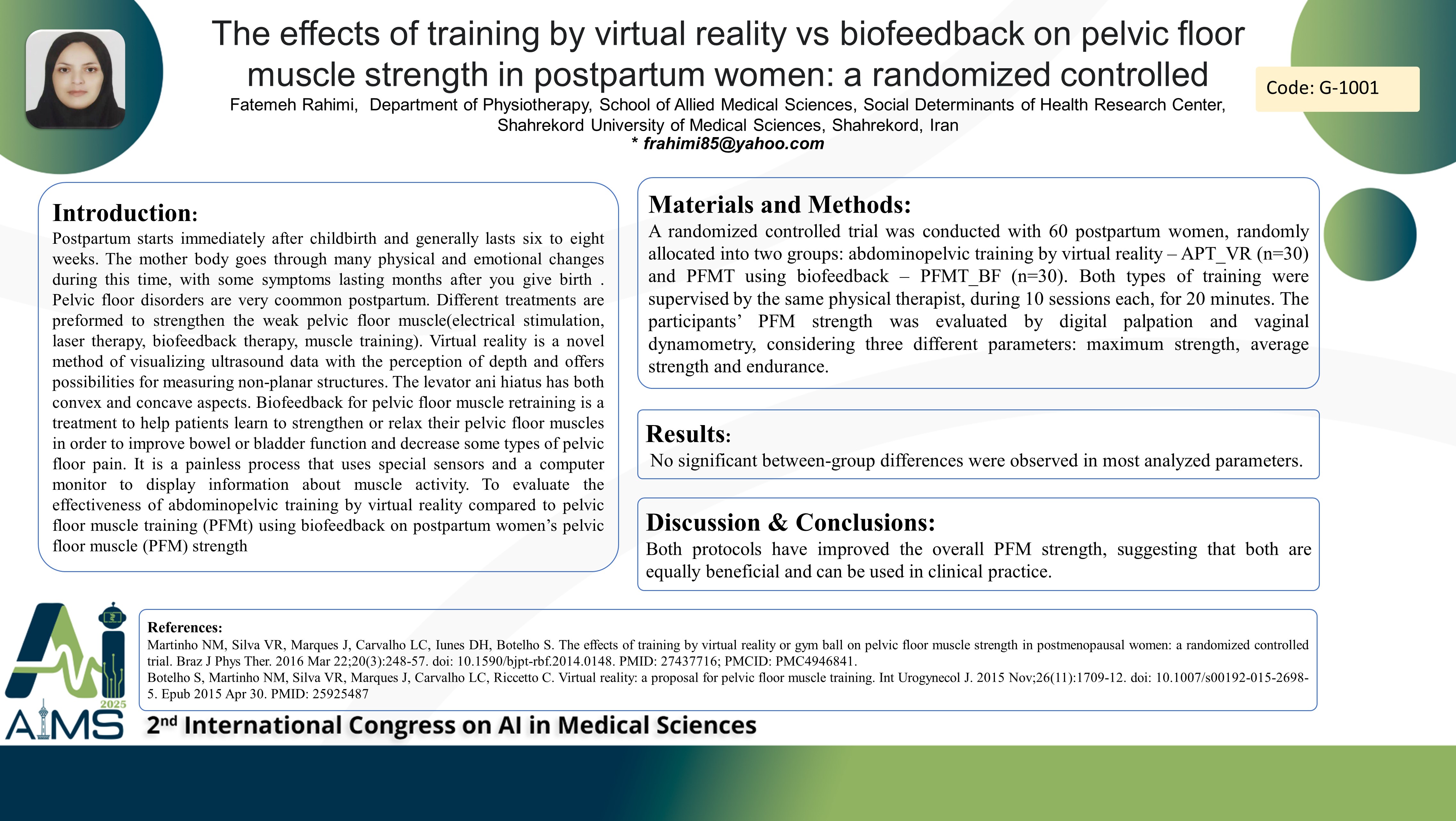تاثرات تمرین با واقعیت مجازی در مقابل بیوفیدبک بر قدرت عضلات کف لگن در زنان پس از زایمان: کارآزمایی بالینی
کد: G-1443
نویسندگان: Fatemeh Rahimi * ℗
زمان بندی: زمان بندی نشده!
برچسب: رباتیک در جراحی و مراقبت سلامت
دانلود: دانلود پوستر
خلاصه مقاله:
خلاصه مقاله
Background and aims: Postpartum starts immediately after childbirth and generally lasts six to eight weeks. The mother body goes through many physical and emotional changes during this time, with some symptoms lasting months after you give birth . Pelvic floor disorders are very coommon postpartum. Different treatments are preformed to strengthen the weak pelvic floor muscle(electrical stimulation, laser therapy, biofeedback therapy, muscle training). Virtual reality is a novel method of visualizing ultrasound data with the perception of depth and offers possibilities for measuring non-planar structures. The levator ani hiatus has both convex and concave aspects. Biofeedback for pelvic floor muscle retraining is a treatment to help patients learn to strengthen or relax their pelvic floor muscles in order to improve bowel or bladder function and decrease some types of pelvic floor pain. It is a painless process that uses special sensors and a computer monitor to display information about muscle activity. To evaluate the effectiveness of abdominopelvic training by virtual reality compared to pelvic floor muscle training (PFMt) using biofeedback on postpartum women’s pelvic floor muscle (PFM) strength. Method: A randomized controlled trial was conducted with 60 postpartum women, randomly allocated into two groups: abdominopelvic training by virtual reality – APT_VR (n=30) and PFMT using biofeedback – PFMT_BF (n=30). Both types of training were supervised by the same physical therapist, during 10 sessions each, for 20 minutes. The participants’ PFM strength was evaluated by digital palpation and vaginal dynamometry, considering three different parameters: maximum strength, average strength and endurance. Results: No significant between-group differences were observed in most analyzed parameters. Conclusion: Both protocols have improved the overall PFM strength, suggesting that both are equally beneficial and can be used in clinical practice.
کلمات کلیدی
Biofeedback ,Virtual Reality, Postpartum, Pelvic Floor
